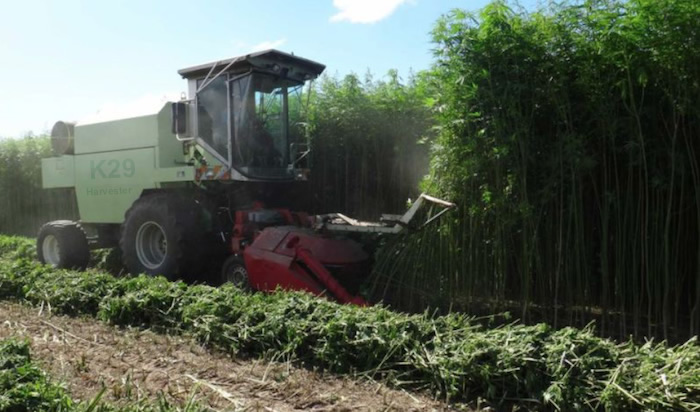Hemp cake or hemp seed meal is the byproduct of cold pressing hemp seeds to extract oil for human consumption. The cake retains a significant quantity of protein and other important nutritional elements, making it ideal for use as animal fodder and also as a fish feed.
Trials carried out using hempseed cake as a protein feed instead of soybean meal to intensively fed growing cattle indicated similar weight gain, but an improved rumen function; due to hempseed cake having a higher amount of fibre than soybean meal.
With regard to fiber, Dutch farmers have been feeding cattle industrial hemp fiber as a supplement for many years, with the cattle reportedly providing more milk and generally experiencing better health.
In Denmark, a hemp oil product was added to the diet of piglets and weaners that led to a significant improvement in piglet survival.
Hemp seed meal added to the diet of laying hens has been found to improve omega fatty acids in the eggs they laid.
Humanity has used hemp as a stock feed for thousands of years. While its use should be widely embraced, it is still banned in many regions over ill-founded fears THC (the psychoactive compound) could contaminate meat and other animal products; even though industrial hemp is very low in this cannabinoid.
This attitude is starting to change; for example, in March 2017, legislation was passed in Colorado to enable the study the feasibility of using hemp in animal feed.
In Australia, rules vary from state to state. In Queensland, denatured industrial hemp seed (seed that cannot germinate), its oil and meal can be fed to animals. Leaves, flowering heads and attached seeds cannot.
Animal Bedding
Industrial hemp can provide a low cost and absorbent bedding material for farm animals. Hemp bedding is sourced from the hurd of the plant – the stalk material that’s mulched into a straw-type material for this purpose.
With its antibacterial and anti-fungal properties, hemp bedding doesn’t contain some of the problematic phenols that may be present in other plant-based bedding.
.
Source: Fibre crops as a source for animal feeding (PDF)
Theodoros Vafeiadakis, Ministry of Rural Development and Food, Greece
Evripidis Kipriotis NAGREF, Greece.














